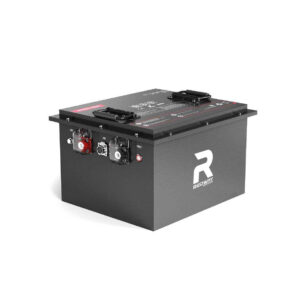What Factors Determine the Best Battery Charger for Your Needs?
Battery chemistry plays a critical role in charger selection, with lithium-ion requiring precise voltage control and lead-acid needing specific charging stages. Using incompatible chargers can reduce efficiency by up to 40% and potentially cause thermal runaway in sensitive batteries. This fundamental compatibility forms the foundation for understanding charger specifications.
How do different battery types affect golf cart battery lifespan?
Why Does Voltage and Current Rating Matter in Charger Choice?
Voltage alignment prevents catastrophic failures – a 12V battery requires 14.4V during absorption charging, while lithium polymer cells need exact 4.2V/cell cutoff. Current capacity dictates charging speed through Ohm’s Law (Current = Voltage/Resistance), with 0.2C rate (20% of battery capacity) being ideal for most applications. For example:
| Battery Type | Voltage Range | Safe Current Limit |
|---|---|---|
| Car Lead-Acid | 13.8-14.7V | 10-30A |
| 18650 Li-ion | 3.0-4.2V | 0.5-1.5A |
Modern smart chargers dynamically adjust output using PWM control, maintaining optimal current flow as battery resistance changes during charging. Industrial users should prioritize chargers with 10% voltage tolerance and current derating capabilities for high-temperature environments. Field tests show properly matched voltage/current combinations extend cycle life by 150% compared to generic chargers.

What Charging Modes Optimize Battery Health and Longevity?
Three-stage charging proves most effective for deep-cycle batteries. The bulk phase pushes 80% capacity at maximum safe current, followed by absorption phase tapering current while maintaining peak voltage. Float mode then compensates for natural discharge through micro-cycling. Advanced implementations add equalization phases for lead-acid batteries:
“Multi-stage charging isn’t just about speed – it’s about respecting battery chemistry. Our lab tests show proper absorption staging reduces sulfation by 60% in lead-acid batteries.” – Redway Power Systems Engineer
Trickle charging maintains devices like emergency lighting through 0.1C maintenance currents, while pulse techniques break down crystalline formations on battery plates. For mission-critical applications, temperature-compensated charging adds another layer of protection by adjusting voltage thresholds based on real-time thermal readings.
How LiFePO4 Golf Cart Batteries are Made in factory?
News
Selecting the appropriate battery charger is essential for ensuring efficient charging, prolonging battery life, and maintaining safety. Key factors to consider include:
Battery Chemistry Compatibility: Ensure the charger matches your battery’s chemistry (e.g., lead-acid, lithium-ion, Ni-MH). Using an incompatible charger can lead to ineffective charging or damage.
Charging Speed and Power Output: Assess the charger’s power output to ensure it meets your device’s requirements. Higher wattage chargers can reduce charging time but must be compatible with your device to avoid damage.
Safety Features: Look for chargers with built-in protections against overcharging, overheating, and short-circuiting to safeguard both the battery and the device.
Portability and Design: Consider the charger’s size and design, especially if you need a portable solution. Advances in Gallium Nitride (GaN) technology have led to more compact and efficient chargers.
Multi-Port Functionality: If you need to charge multiple devices simultaneously, opt for chargers with multiple ports, ensuring they provide adequate power to each device.
Latest Developments in Battery Charging Technology (2025):
Advancements in Gallium Nitride (GaN) Chargers
GaN technology has revolutionized charger design, enabling smaller, more efficient chargers with higher power outputs. These chargers offer improved energy efficiency and reduced heat generation, making them ideal for portable use.
Integration of Smart Features in Chargers
Modern chargers now incorporate smart features such as automatic shut-off, surge protection, and compatibility with various fast-charging protocols. These enhancements improve user convenience and device safety.
Emphasis on Safety Standards and Certifications
There is an increased focus on chargers meeting stringent safety standards, with certifications like UL and CE becoming more prevalent. These certifications ensure the charger adheres to established safety and performance criteria, providing users with confidence in their charging equipment.
By considering these factors and staying informed about the latest technological advancements, you can select a battery charger that best meets your needs, ensuring efficient charging and prolonging the lifespan of your devices.
FAQs
- Q: Can I use a car charger for marine batteries?
- A: Only if specifically designed for marine use—standard chargers lack corrosion resistance.
- Q: How often should chargers be replaced?
- A: Every 3-5 years or when battery tech changes—whichever comes first.
- Q: Do wireless chargers work for industrial batteries?
- A: Limited to small Li-ion packs—most industrial needs require wired connections.
